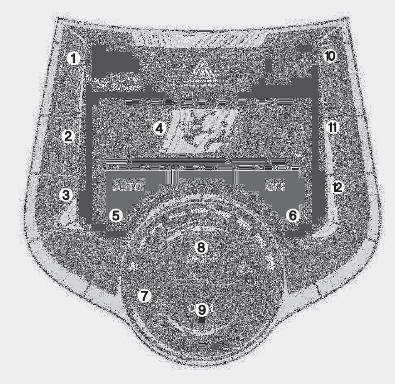
Hyundai Elantra Owners Manual
Automatic climate control system (if equipped)Features of your vehicle / Automatic climate control system (if equipped)

1. DriverŌĆÖs temperature control button
2. Front windshield defrost button
3. Air intake control button
4. LCD display
5. AUTO (automatic control) button
6. OFF button
7. Fan speed control knob
8. Mode selection button
9. Dual temperature control selection button
10. PassengerŌĆÖs temperature control button
11. Rear window defrost button
12. Air conditioning button



┬® 2026 www.hyundaielantramanual.com. All Rights Reserved.



